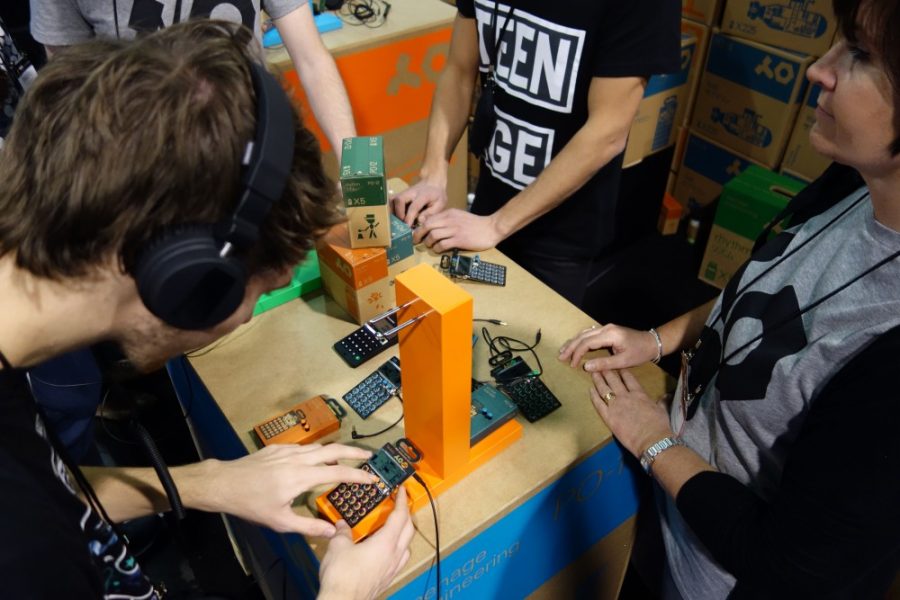Thanks to the Society of Hispanic Professional Engineers (SHPE), high school students are getting a leg up in the fields of science, technology, engineering and mathematics.
On Thursday, March 2, 200 Latino high school students from around Tucson traveled to the UA to participate in an event titled The Advancement of Latinos in Engineering and the Young Latina Forum (ALE/YLF)—a day filled with workshops, engineering challenges and keynote speakers.
“For Latinos and women as a whole, we’d like there to be a movement to know that they have the option to be an engineer, that it’s not just a field available to the majority of people but also to the minorities,” said Michael Sveiven, vice president of Advancement of Latinos in Engineering for SHPE and a senior in biomedical and electrical and computer engineering.
ALE/YLF has been reaching out to underprivileged communities and minority students for the last 10 years.
The program gives students an idea of what life at a university is like, as well as providing them with valuable opportunities to interact with other engineering students and clubs, Sveiven said.
RELATED: Water equity a focus at science diplomacy con
“A lot of these students come from underprivileged communities, so sometimes they don’t even think college is a possibility,” said Karina Palomares, SHPE’s vice president of the Young Latina Forum and a junior in chemical engineering.
UA alum James Valenzuela is a living example of the benefits that come from receiving an education in one of the STEM fields.
“Being an engineer pulled me out of poverty,” said Valenzuela, now a senior industrial engineer at Raytheon and one of the opening speakers for the event. “I grew up in a poor part of town, both of my parents were immigrant workers and there were no engineers in my family.”
He went on to add that becoming an engineer prepared him for life and helped him to grow professionally and overcome many challenges.
Growing up, Palomares never thought she would become an engineer, she said. Coming from an underprivileged high school in Southern Arizona, she was one of only a few to pursue a degree in a field as challenging as engineering.
“I think the role of Latinas in an engineering field is just to create and innovate and become something bigger than what they are expected to be, at home or culturally or by society,” Palomares said.
A key goal of ALE/YLF was to show the students that an education in STEM is accessible to them as long as they are creative, resourceful and willing to work hard, Sveiven said.
“One of the barriers for students is the bias and misconception people hold that Latinos may not have the academic ability to succeed in a career such as engineering,” said Guadalupe Waitherwerch, the Hispanic-Serving Institutions STEM program manager at Pima Community College and longtime contributor to the event.
Waitherwerch went on to add that students need to see first-hand other people who look like them that have been successful in STEM fields and can serve as role models.
Being a member of a club like the SHPE will also help students find community and support among their peers, Sveiven said.
“There’s a lot of things you gain when you put the effort into being a part of a club and when you find someone that really fosters that sense of community, because not all clubs do,” Palomares said.
RELATED: Competition tasks students to program better self-driving cars
Part of the day included a club fair before the opening ceremony, where students met with various STEM clubs and university admissions. Following the opening ceremony, students spent the majority of the day in engineering challenge workshops.
These workshops were focused around a problem: using engineering principles to develop a cure for a sickness affecting an island.
First, students explored chemical engineering by creating a “nanoparticle cure,” Sveiven explained. Next, they built a mechanical car to transport the cure, complete with a motor and solar-powered batteries.
Then, using civil engineering skills, they constructed a bridge out of Popsicle sticks to carry the car and the cure to the island. Once the car arrived on the island, the students designed an HTML page to advertise their cure.
The winning teams received a prize, Sveiven said. There was also a raffle at the end for a drone, Kindle e-reader and Bluetooth speaker.
Both Sveiven and Palomares acknowledge the support of their respective committees and generous sponsors in launching the event.
“Our sponsors do give us substantial financial support, and it’s worth noting that it’s not just us that cares about this, like the surrounding professional community, these engineering companies give quite large sums because they know that it’s important and because they appreciate the hard work we put in and the relationships they get out of this,” Sveiven said.
As a former member of the Society of Hispanic Professional Engineers, Valenzuela is impressed by the efforts of the current chapter.
“They have continued the mission of giving back and being good stewards of their profession and everything else they do, so I’m very proud of them,” he said.
Follow Hannah Dahl on Twitter.









